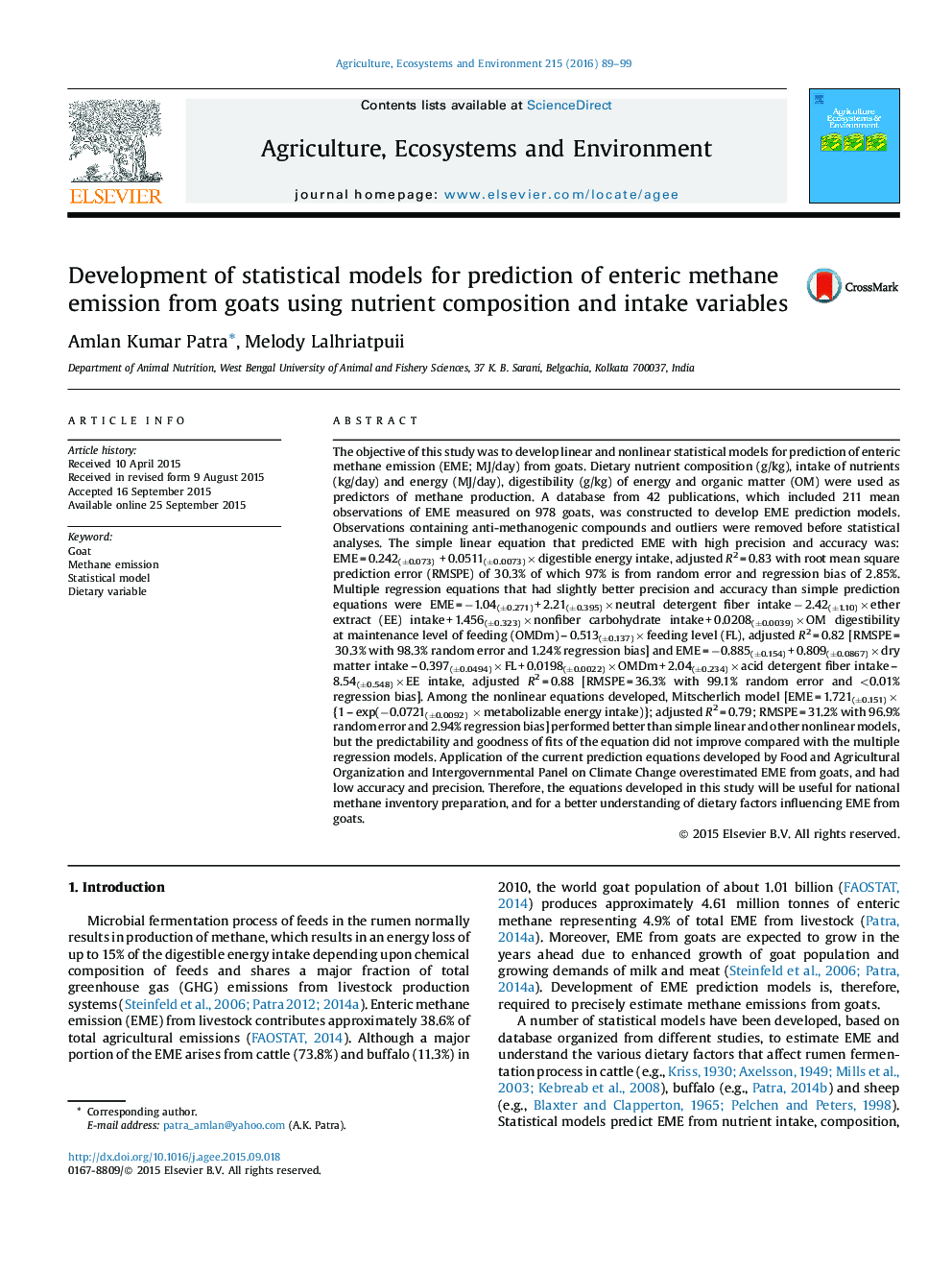| Article ID | Journal | Published Year | Pages | File Type |
|---|---|---|---|---|
| 2413692 | Agriculture, Ecosystems & Environment | 2016 | 11 Pages |
•Enteric methane emission (EME) from goat was predicted.•Linear and nonlinear EME prediction models were developed from intake variables.•Few models predicted EME in goats with high precision and accuracy.•The extant models developed for cattle overestimated EME from goats.•The new models will improve the inventory data of EME from goats.
The objective of this study was to develop linear and nonlinear statistical models for prediction of enteric methane emission (EME; MJ/day) from goats. Dietary nutrient composition (g/kg), intake of nutrients (kg/day) and energy (MJ/day), digestibility (g/kg) of energy and organic matter (OM) were used as predictors of methane production. A database from 42 publications, which included 211 mean observations of EME measured on 978 goats, was constructed to develop EME prediction models. Observations containing anti-methanogenic compounds and outliers were removed before statistical analyses. The simple linear equation that predicted EME with high precision and accuracy was: EME = 0.242(±0.073) + 0.0511(±0.0073) × digestible energy intake, adjusted R2 = 0.83 with root mean square prediction error (RMSPE) of 30.3% of which 97% is from random error and regression bias of 2.85%. Multiple regression equations that had slightly better precision and accuracy than simple prediction equations were EME = −1.04(±0.271) + 2.21(±0.395) × neutral detergent fiber intake − 2.42(±1.10) × ether extract (EE) intake + 1.456(±0.323) × nonfiber carbohydrate intake + 0.0208(±0.0039) × OM digestibility at maintenance level of feeding (OMDm) – 0.513(±0.137) × feeding level (FL), adjusted R2 = 0.82 [RMSPE = 30.3% with 98.3% random error and 1.24% regression bias] and EME = −0.885(±0.154) + 0.809(±0.0867) × dry matter intake – 0.397(±0.0494) × FL + 0.0198(±0.0022) × OMDm + 2.04(±0.234) × acid detergent fiber intake – 8.54(±0.548) × EE intake, adjusted R2 = 0.88 [RMSPE = 36.3% with 99.1% random error and <0.01% regression bias]. Among the nonlinear equations developed, Mitscherlich model [EME = 1.721(±0.151) × {1 – exp(−0.0721(±0.0092) × metabolizable energy intake)}; adjusted R2 = 0.79; RMSPE = 31.2% with 96.9% random error and 2.94% regression bias] performed better than simple linear and other nonlinear models, but the predictability and goodness of fits of the equation did not improve compared with the multiple regression models. Application of the current prediction equations developed by Food and Agricultural Organization and Intergovernmental Panel on Climate Change overestimated EME from goats, and had low accuracy and precision. Therefore, the equations developed in this study will be useful for national methane inventory preparation, and for a better understanding of dietary factors influencing EME from goats.
